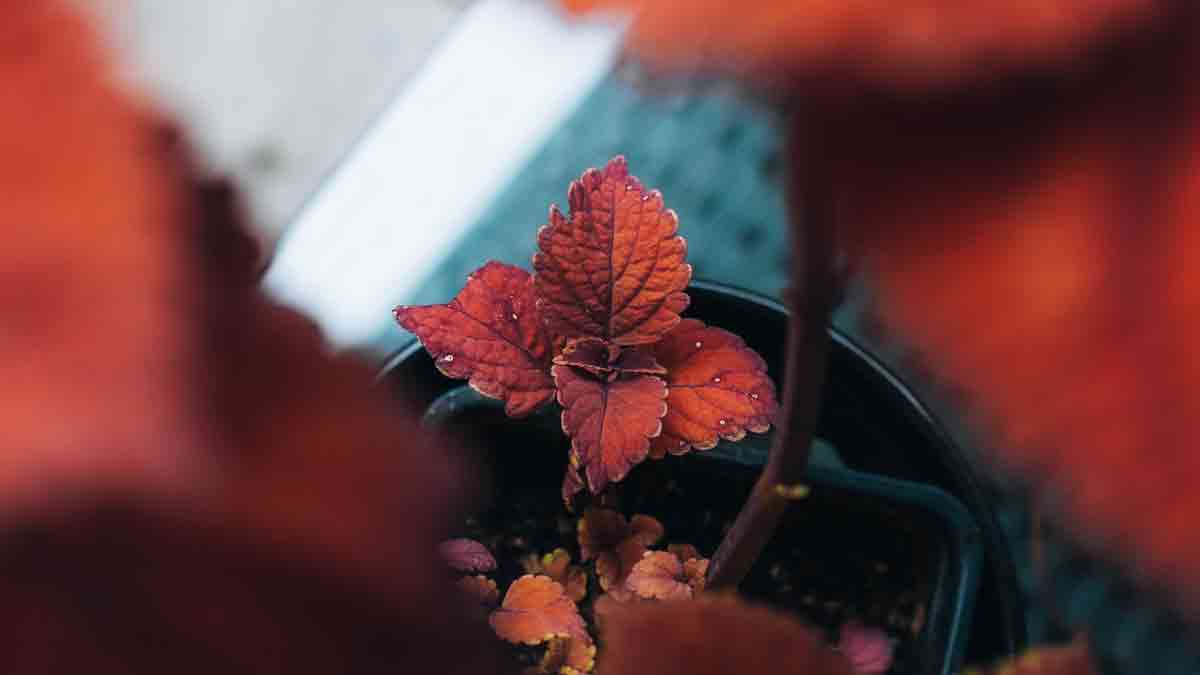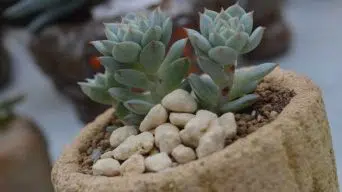Repot coleus plants in spring using a new, slightly larger pot with well-draining potting soil. Gently remove the plant from the old pot and fill a new pot with soil. Coleus prefers part shade and soil with a slightly acidic to neutral pH of 6.0-7.0. Repot every 1-2 years or when the plant becomes root-bound.
Coleus plants are popular houseplants with vibrant foliage that can be used to brighten up any indoor space.
These beautiful plants require regular repotting to promote healthy growth and prevent overcrowding of the pot. Repotting is essential in providing your Coleus plants with the right environment to thrive.
Here we will discuss the importance of repotting coleus plants and provide a step-by-step guide on how to do it properly. By following these simple steps, your Coleus plant will flourish in no time!
When to Repot Your Coleus Plant
Coleus is an easy-to-care-for houseplant that loves a little sunshine and moist soil. But even with the best care, you may need to repot your coleus at some point.
Repotting is an important part of your Coleus’s overall health and growth. Knowing when it needs to move into a larger pot will help keep it healthy and happy!
Here are some signs that it may be time for you to give your Coleus a new home:
1. Roots Are Growing Out of the Drainage Holes
If you notice roots coming out of the drainage holes in your pot, it means that they have become root-bound.
Root-bound roots can’t absorb water and nutrients as efficiently, causing stress on your plant.
Repotting will give the roots more space to grow and access the necessary resources for healthy growth.
2. Your Coleus Is Outgrowing Its Pot
Coleus is a fast-growing plant that can quickly outgrow its pot.
If you notice your Coleus is too big for its pot, it may be time to move it into a larger one.
This will give the roots more room to spread out and access water and nutrients.
3. The Pot Is Starting to Crack
A cracked pot can put your Coleus at risk of root rot or other diseases.
When the pot is too small, it puts pressure on the sides and can cause the material to crack.
If you notice cracks in your pot, it’s time to move your plant into a larger one.
4. Fungal Growth
If you notice white, fuzzy areas growing on the surface of the potting soil or on the roots, it’s a sign of fungal growth.
Fungal growth can spread quickly and lead to root rot if left untreated.
Repotting your Coleus into a new pot with fresh soil will help prevent any further infection.
5. The Soil Is Depleted
If the soil in your pot has been used for several years, it may be depleted of its nutrients.
This can cause stress on your Coleus and reduce its growth.
Repotting with fresh soil will give your plant the nutrients it needs to stay healthy and strong.
6. Root Rot
Root rot is a common problem caused by overwatering and poor drainage.
If you notice any discoloration or mushy areas on the roots, it’s likely an indication of root rot.
Repotting your plant in fresh soil will help prevent further infection and keep your Coleus healthy.
How To Prepare Your Coleus For Repotting
When it comes to repotting your beloved Coleus, it’s important that you take the proper steps to ensure a successful transplant.
To get started on the right foot, here are four key preparatory steps you should take:
1. Choose the Right Pot
The right pot is essential for your Coleus’s success. Choose a pot two inches larger than the current one with good drainage holes.
Look for a pot made of materials that allow your Coleus to breathe, like terracotta or ceramic.
2. Use a Proper Soil Mix
To thrive, your Coleus needs nutrient-rich, well-draining soil with a pH between 6.0 and 7.0.
You can purchase a potting mix from your local store or make your own blend with ingredients such as peat moss, perlite, and bark chips.
3. Water Your Coleus a Day Before Transplanting
Before you begin, it’s important to give your Coleus an extra drink of water. This will reduce transplant stress and help your Coleus adjust to its new home.
But water lightly; you don’t want the potting soil to be too wet, just a little damp. If the soil is too wet, repotting can become more difficult.
4. Set Up a Sterilized Area
Before starting the repotting process, set up a clean and sterile area where you will work. This will help prevent diseases from spreading to your plants.
Make sure to wash any materials with warm soapy water and disinfect them before using them on your Coleus.
How To Repot Coleus Plants
Once you have completed the preparatory steps, it’s time to repot your Coleus.
Follow these simple steps to help ensure a successful transplant:
1. Remove the Plant From Its Old Pot
Gently remove your plant from its old pot and loosen any tangled roots with your fingers.
If the roots are severely bound, use a sharp tool to carefully cut through them.
You also need to remove old potting soil and debris from the roots. Make sure to be careful and avoid damaging the roots.
2. Inspect the Roots
Now it’s time to inspect the roots. Look for any signs of disease, like discoloration or mushy areas.
If you notice these symptoms, remove them by carefully cutting away the diseased parts with a sharp tool.
You may also need to trim some of the roots that have become too long or entangled.
3. Place Your Coleus in Its New Pot
Once you’re done inspecting and trimming the roots, it’s time to place your Coleus in its new pot.
Fill the bottom of the pot with a few inches of potting soil, and then place your Coleus in the center.
Gently fill the rest of the pot with soil, leaving a few inches at the top for watering.
4. Don’t Water Immediately
When you’re done, don’t water your Coleus right away. Allow it to sit for a few days, so the roots have time to settle and heal from the repotting process.
Once the plant has settled, give it a good drink of water to help promote healthy growth.
5. Place Your Plant in the Right Spot
Remember to place your Coleus in a spot that has bright indirect light. Avoid direct sunlight as it can burn the leaves.
When growing Coleus indoors, an east-facing windowsill or a shaded area in your home would be a good spot.
How Often to Repot Coleus Plants
Coleus plants are easy to care for, and with the right repotting frequency, you can keep them looking beautiful for years!
But how often should you repot a coleus?
Recommended Frequency of Repotting
It’s important to remember that Coleus plants can outgrow their pots quickly.
When this happens, the roots become tangled and start to curl around each other, making it difficult for them to access water and nutrients.
That’s why it’s recommended to repot your Coleus every one or two years. This will help ensure that its roots have enough space to grow and access the necessary nutrients.
It’s also important to consider that with time, the soil in the pot gets depleted of its nutrients.
Periodic repotting helps to replenish the soil, providing your Coleus with essential nutrients for healthy growth.
Best Time to Repot Coleus Plants
The best time to repot a coleus is when it’s active growth during spring or summer.
Winter is not recommended, as cold temperatures can damage the plant, so if you have to repot, ensure it stays warm by keeping it in a well-ventilated area.
It’s better to do it early in the day when the temperature is cooler, and the sun won’t cause wilting.
Final Thoughts
If you take the time to repot coleus, your potted plants will look better and last longer. Not only that, but with more room in their pot, they’ll have access to more nutrients.
Repotting can make all the difference when it comes to taking care of your beloved indoor plant!
So don’t be afraid to give your coleus a little extra TLC.
With the right preparation and some know-how, you can be sure your plant will look its best for years to come.
Happy repotting!







